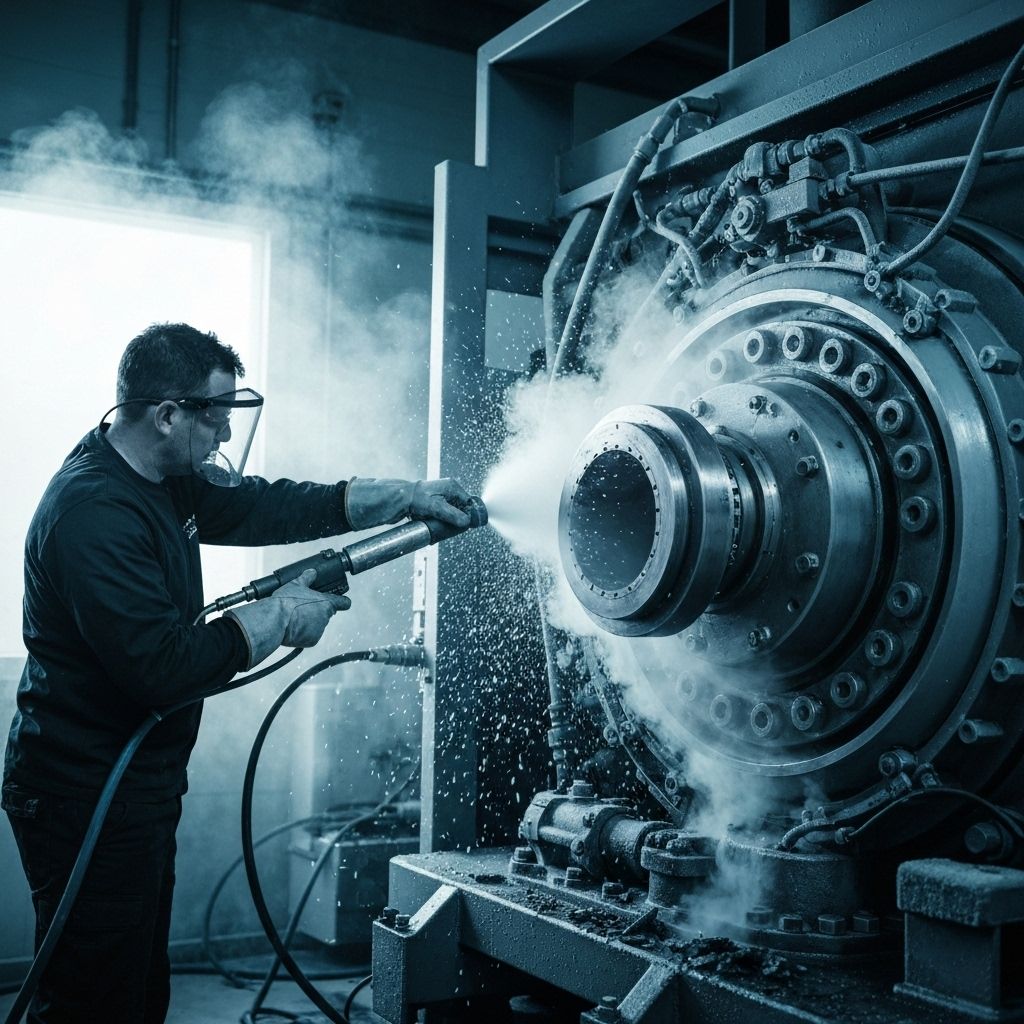FAA-Approved Aircraft Maintenance
The non-abrasive solution that reduces AOG time by 70% while preserving aircraft integrity
Aircraft maintenance cleaning presents unique challenges that traditional methods struggle to address effectively. Jet engines accumulate carbon deposits, hydraulic fluid, and contamination that reduce efficiency and can cause failures. Landing gear collects grease, brake dust, and grime that hides cracks and corrosion during inspection. Airframes and composite structures require gentle cleaning that won't damage protective coatings or delicate materials. Traditional cleaning methods create significant problems: abrasive media blasting damages aircraft surfaces and protective coatings, high-pressure water washing introduces moisture that causes corrosion and can force water into composite laminates, chemical solvents leave residue and create disposal problems, and manual cleaning is time-consuming, labor-intensive, and often misses contamination in inaccessible areas. Extended aircraft downtime for cleaning costs airlines and operators enormous sums in lost revenue—a widebody aircraft can generate $15,000+ per flight hour, making every day of maintenance downtime extremely expensive. Our dry ice cleaning technology solves these problems—providing thorough, non-abrasive cleaning that's approved by the FAA, EASA, and major manufacturers while reducing Aircraft on Ground (AOG) time by 70%.
The non-abrasive nature of dry ice makes it uniquely suited for aerospace and aviation maintenance. Unlike abrasive blasting that can damage aircraft surfaces or high-pressure washing that introduces moisture risks, dry ice cleaning removes contamination gently while leaving components completely dry and undamaged. This is critical for modern aircraft that use extensive composite materials—the Boeing 787 and Airbus A350 are over 50% composites by weight. Dry ice cleaning is safe for carbon fiber, fiberglass, painted surfaces, anodized aluminum, and all aircraft materials. We routinely clean jet engines without disassembly, removing carbon deposits from compressor blades and turbine sections that manual cleaning cannot reach. Rolls Royce has specifically approved dry ice cleaning for turbine titanium compressor drum assemblies. An engine cleaning that traditionally requires 2-3 weeks for disassembly, manual cleaning, inspection, and reassembly can often be completed in 1-2 days with the engine assembled. For a commercial airline, this time savings represents hundreds of thousands of dollars in avoided revenue loss and reduced maintenance costs.
Beyond time savings, dry ice cleaning delivers superior results that improve aircraft safety and performance. The process reaches into tight spaces, blade passages, and complex geometries that manual cleaning misses, providing thorough contamination removal that reveals underlying conditions requiring attention. Clean engines operate more efficiently with improved fuel consumption and reduced emissions. Clean landing gear allows proper inspection for cracks, corrosion, and wear. Clean hydraulic components prevent contamination-related failures. For aircraft restoration, dry ice cleaning can restore decades-old aircraft to like-new condition while preserving original finishes, serial numbers, and manufacturer markings. Many MRO facilities, airlines, and private aircraft operators have adopted dry ice cleaning as a standard maintenance practice specifically because it delivers results that traditional methods cannot match while dramatically reducing downtime and costs. Our services extend beyond aviation to include industrial equipment cleaning and commercial facility maintenance. The combination of FAA approval, manufacturer endorsement, and proven results makes dry ice cleaning the preferred choice for aviation maintenance professionals who demand the highest standards.
